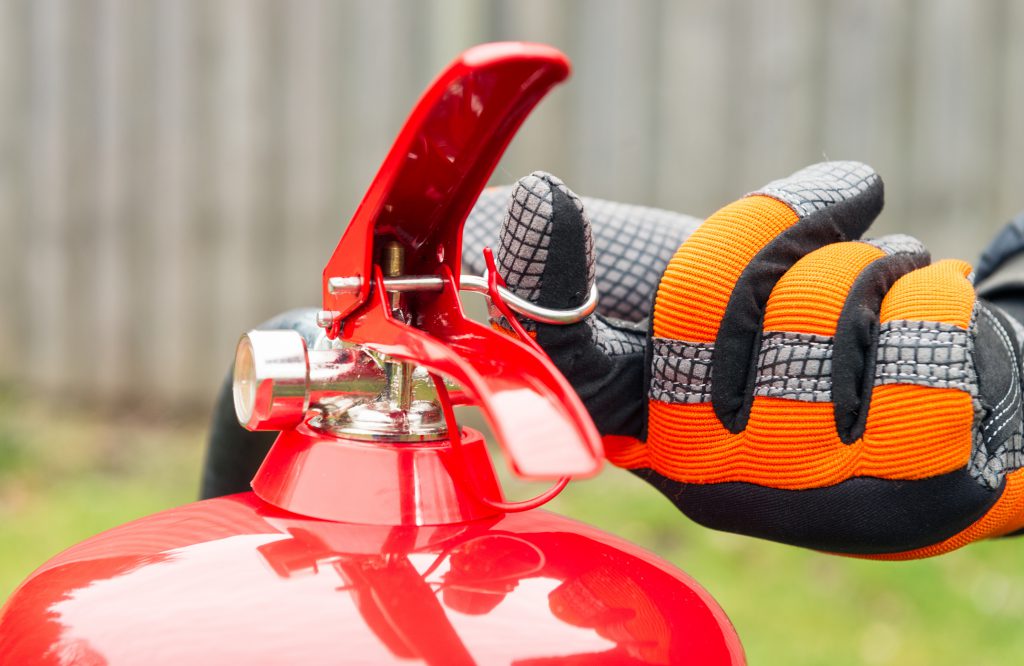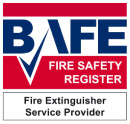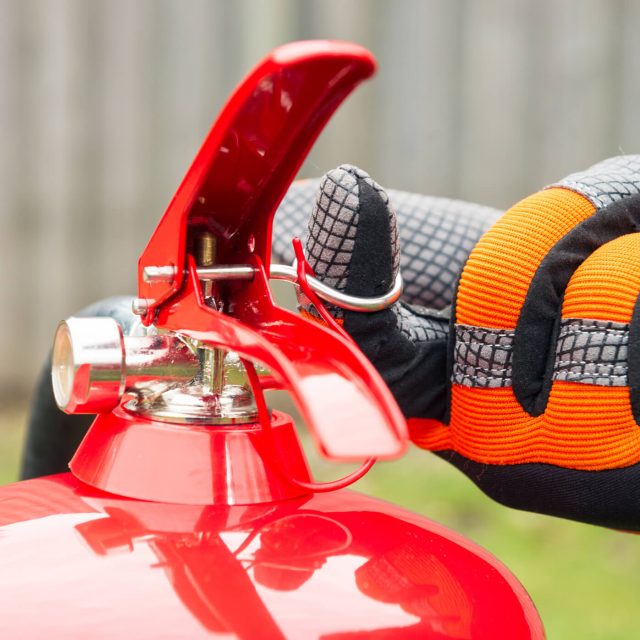28 April 2021
How to Use a Water Fire Extinguisher
It’s important that business owners fully understand the different facets of fire extinguishers and how they can be used to combat fires. There are several different types of fire extinguisher available, and each one is designed to combat certain types of fire – in this piece, the team at Fire & Security Group are going to look at water fire extinguishers, giving you everything you need to know to use them safely and properly.

What is a Water Fire Extinguisher?
Each type of fire extinguisher has a different coloured band for identification purposes, and water extinguishers use a red band – essentially, the extinguisher looks like a solid red canister. Like CO2 and dry powder extinguishers, water extinguishers are very common; they’re found in all types of premises.
What Types of Fire can a Water Extinguisher be used on?
Water fire extinguishers can only be used on Class A fires – fires involving organic materials like paper, wood, soft furnishings and textiles. It’s important to note that there are several types of fire that water extinguishers must not be used on fires involving flammable liquids or electrical equipment.
How does a Water Fire Extinguisher work?
Water extinguishers can work in a few different ways, depending on the ‘type’ of water that is being ejected. For example, the water can take the form of a pressurised jet, or it can be deployed as a mist or fog. You can also buy water extinguishers with chemical additives – the additives mean that the water soaks into the burning materials more quickly.
How do I operate a Water Fire Extinguisher?
The PASS system is the most effective, easy-to-follow way of operating a fire extinguisher. Before we detail what the PASS system is, please note that you should only attempt to extinguish small fires, and you should ensure you’re a safe distance away before attempting to combat said fire. If the fire is too big, or it’s spreading, then evacuate the building and call the fire brigade.
The PASS system is as follows:
P – Pull the pin
Remove the pin at the top of the fire extinguisher. This ‘unlocks’ the extinguisher and means you can press the lever to release the water.
A – Aim
You should always aim the nozzle at the base of the fire, but depending on the direction that the fire is spreading, you should use the extinguisher in a certain way, which will be clarified at a later stage of this explanation.
S – Squeeze
Squeeze the lever to release the water. Make sure to take a measured approach when deploying the extinguisher so you don’t empty it too quickly.
S – Sweep
If the fire is spreading horizontally, perform a sweeping motion across the base of the fire whilst depressing the lever. If the fire is spreading vertically, sweep vertically whilst depressing the lever so that you can cover the area of the fire.
When using water to extinguish a fire, there’s potential for certain spots to reignite. Before leaving the area, make sure that the entire fire is completely extinguished.
Fire & Security Group are proud to supply and install water fire extinguishers for customers across the UK. Our extinguishers are British Standard-kitemarked and BS 5306-3-approved, so you can be absolutely sure of their quality. In addition to extinguishers, we also provide fire safety training to ensure you and your staff can operate extinguishers safely in the event of an emergency. Contact us today for more information and we’ll be happy to help.

